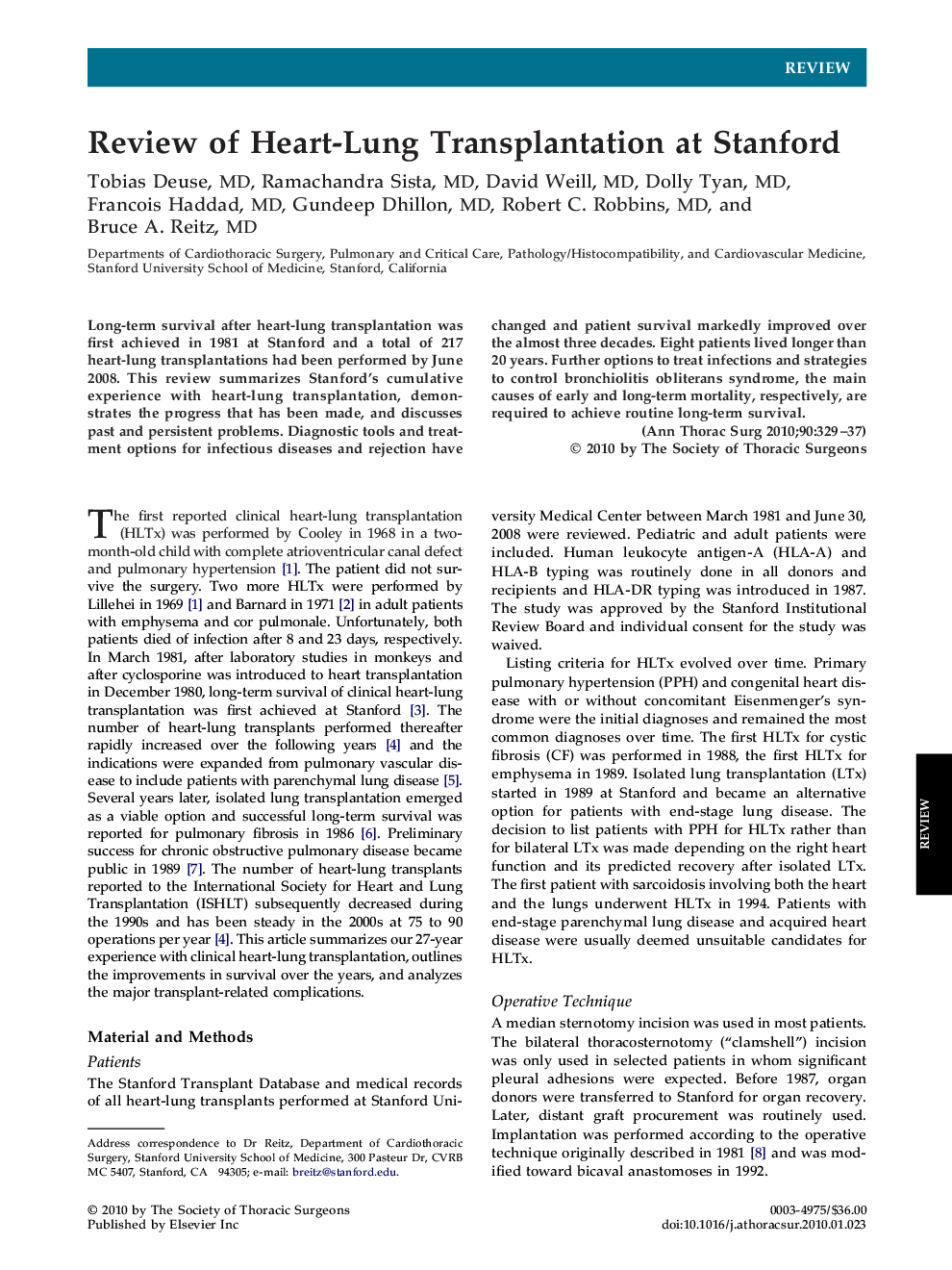| Article ID | Journal | Published Year | Pages | File Type |
|---|---|---|---|---|
| 2878856 | The Annals of Thoracic Surgery | 2010 | 9 Pages |
Abstract
Long-term survival after heart-lung transplantation was first achieved in 1981 at Stanford and a total of 217 heart-lung transplantations had been performed by June 2008. This review summarizes Stanford's cumulative experience with heart-lung transplantation, demonstrates the progress that has been made, and discusses past and persistent problems. Diagnostic tools and treatment options for infectious diseases and rejection have changed and patient survival markedly improved over the almost three decades. Eight patients lived longer than 20 years. Further options to treat infections and strategies to control bronchiolitis obliterans syndrome, the main causes of early and long-term mortality, respectively, are required to achieve routine long-term survival.
Keywords
ISHLTRATGTBBXHLTxLTXPPHBOSRabbit antithymocyte globulinHuman leukocyte antigenHLAInternational Society for Heart and Lung TransplantationEndomyocardial biopsyBronchiolitis obliterans syndromecytomegalovirusCMVCystic fibrosisMismatchesprimary pulmonary hypertensionLung transplantationheart-lung transplantation
Related Topics
Health Sciences
Medicine and Dentistry
Cardiology and Cardiovascular Medicine
Authors
Tobias MD, Ramachandra MD, David MD, Dolly MD, Francois MD, Gundeep MD, Robert C. MD, Bruce A. MD,
